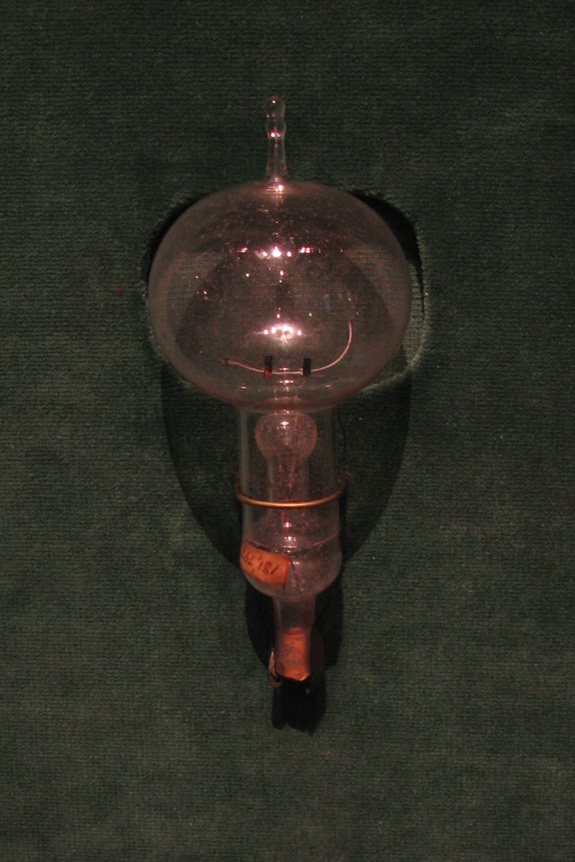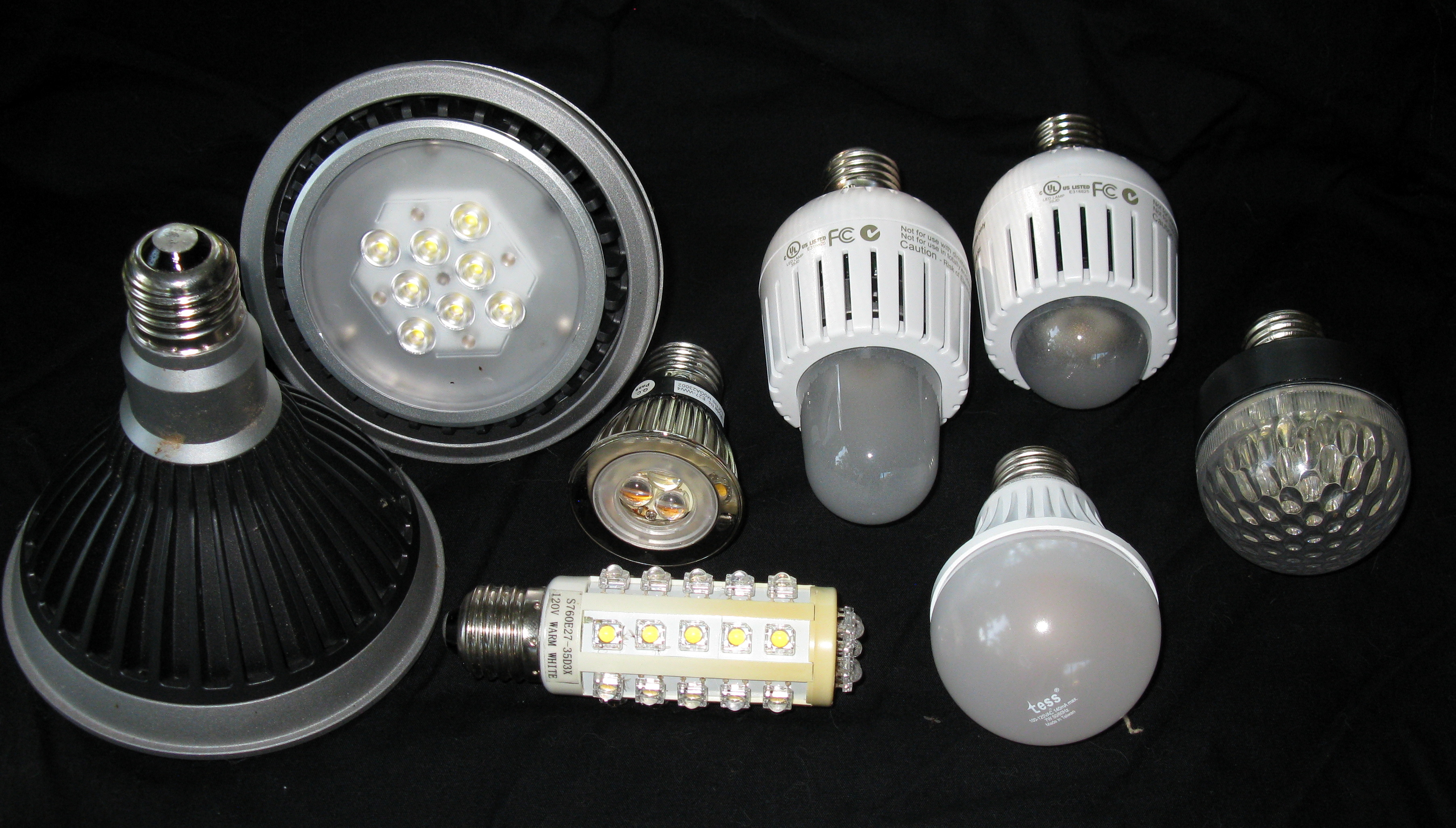The history of the light bulb is the history of electricity. It's the simplest electrical appliance, a resistor that gets hot enough to glow. And it's had a good run: 1880 to 2012. What other technology has lasted that long? But soon you won't be able to buy them any more.
In the early development of the electric grid, buildings weren't given outlets for pronged plugs. They just installed light fixtures. The vast majority of electrical devices were light bulbs anyway, and those that weren't simply had the same kind of screw-in base that a light bulb did. (I read somewhere that the second most common electrical device used in homes in the late 1800s was the vibrator. Some things never change.)
 |
| Edison's bulb. From http://en.wikipedia.org/wiki/Incandescent_light_bulb |
When I was a kid, you could get 3-way bulbs that would run at 50, 100, or 150 watts. Those suckers really lit up a room. But by today's standards of energy efficiency, they're an abominable waste - especially in the summertime, when your air conditioning system then has to then use more power to pump that heat out of your house. These days, a full-sized laptop computer runs on less than 65 watts when it's working hard.
(It's estimated that 9% of electricity consumption in US households goes to lighting, so this is one of those little problems that adds up to big money. This is a national priority, and it's exactly the sort of thing our Department of Energy should be working on.)
Fast foward to late 2006, when I moved into my house in Cleveland and found that the previous owner had lit much of it with compact fluorescent bulbs (CFLs). These are often marketed as giving "60 Watt Equivalent" or similar illumination, for much less power (
typically about one-fourth). They cost more initially than incandescent bulbs, but if they reach their expected lifetime, they cost much less to operate. I have had a few burn out on me, so I'm not sure how reliably they reach those lifetimes. Maybe I have noisy electricity.
The next leap will be to
LED lighting. The cousins of those little flashing red and green dots will soon be illuminating your living room, using even less power (though the current generation is about as efficient as CFLs). Unfortunately they are also prohibitively expensive right now--about $40 for
a bulb equivalent to a 40-watt incandescent. They might last for decades, but at those prices, you might want to bequeathe them to your children in your will. Their biggest technological challenge right now is heat, which is something of a paradox since they produce so little of it. The reason it's a problem is because they themselves are so little: the heat is concentrated in a tiny electronic component. Heat reduces the LED's lifetime. My company is busy supplying manufacturers of LED lighting systems with
materials for next-generation thermal management.
I'm a realist, so I have to be honest about the drawbacks of technologies as I perceive them. After moving in, I actually replaced some of those CFLs in my house with incandescents, for a couple of reasons. First, they don't light immediately. I have a tendency to charge into a room and flick the light switch on my way through the door. If the light doesn't come on quickly, I could trip on something. Correction: I, uh, have tripped on things. Second, not all CFLs are dimmable. There are times when you don't want the full searchlight glare, like from your dining room chandelier during a romantic homemade dinner. Special CFL bulbs and compatible dimmer switches are the answer here.
Another concern is
color quality. I'm fairly picky about this; even among GE's incandescent offerings, I prefer the "reveal" bulbs over the standard "soft white" ones, which I think have a yellowish tint. Fluorescent bulbs, especially the cheap kind used in warehouses, are significantly worse. I could go into detail about the spectrum--what you see when you put the light through a prism--but suffice it to say that better phosphors will give us better quality light from both CFLs and LEDs. And better quality light means the colors of your clothes and your wall paints will be more nuanced. As a worst case scenario, think about yellow sodium streetlights: they make everything look black and white.
My home has a lot of light bulbs. In three different rooms, there are arrays of six or eight lights recessed into the ceiling; with 60W bulbs, each array burns 360-480 watts. I turn them off when I'm not using them, and we often use them dimmed. These arrays are prime candidates for CFL conversion.
Fighting to acquire more energy is a ham-fisted approach to energy security, in my mind. Reducing usage in the first place is a better start - and we can all contribute.





